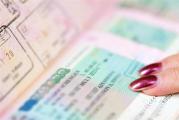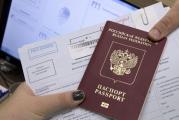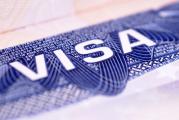How to read marks on a Schengen visa
After obtaining a passport with permission to cross the Schengen border, many travelers have a number of questions. In particular, they are interested in the maximum length of stay or the number of times a visa decision can be made. Failure to meet the criteria defined by the visa can ruin the reputation of an inexperienced tourist, so it is important to understand how to read a Schengen visa.
Traveling to European countries in most cases requires a special permit. We will focus on the technical aspects of the visa stamp pasted into the passport, which is popularly called simply “Schengen”.
What does a Schengen visa look like in a passport?
The main features of the color insert are the visa number, the photo of the document holder, several concise fields with filled in data and an alphanumeric code zone.
The purpose of the latter is to speed up the identification of the traveler as much as possible.
As a rule, the names of the fields to be filled in are presented in three languages:
- the country that issued the visa;
- French;
- English.
For obvious reasons, the exception is the French visa stamp - in it the fields are presented only in two languages.
Like any important document, each visa stamp has a unique number that is entered into a common database. Where is the Schengen visa number in the passport? This number is indicated in the upper right corner of the sticker and consists of 9 digits.
How to read the information in the visa decision
Many travelers have at least a basic knowledge of one of the languages used in field names. But even for them, reading a visa can be difficult. A short explanation of special terms will help.

- VALID FOR - countries where the visa is valid. Most often, this field indicates the wording, which means that with this visa you can visit the entire territory of the Schengen zone. The phrase "Schengen countries" is indicated in the language of the state that issued the visa. In the upper right corner is the letter code of the country whose consulate issued the visa.
Another option is a list of countries to which entry is closed, as evidenced by the presence of a minus sign.
- FROM - date of commencement of the visa. Specified as follows: DD-MM-YY.
- UNTIL - expiration date of the visa permit.
- TYPE OF VISA - the type of visa indicated by Latin letters:
- A - transit
- C - short-term (tourist);
- D - long-term (working, educational, etc.).
- NUMBER OF ENTRIES - possible number of entries (one, two or multiple).
- DURATION OF STAY - the maximum number of days that a visa holder can spend in the Schengen area.
- ISSUED IN - the authority that issued the permit (as a rule, the city in which the representative office that considered the application is located is indicated).
- ON - the date of issue of the permit document.
- NUMBER OF PASSPORT - the number of the international passport, in which the visa stamp is pasted.
- SURNAME, NAME - surname and name of the owner of the document.
- REMARKS - notes. Most often, this field is left blank. Sometimes the embassy of a country can put down a code for the purpose of the visit (for example, in a Polish visa, 01 means tourism, 04 - business visit, 15 - treatment, and the Germans use the wording TOURISTISCHEN VISUM ERWERBSTATIGKEIT NICHT GESTATTET to emphasize that a tourist visa is issued without the right to job).
At the bottom of the visa stamp is a unique cipher read by the machine during passport verification.

Those who are looking for information on how to read the Schengen multivisa should know that this permit document is practically no different from a single or double entry visa. The difference is only in the note in the “Number of entries” field, which determines the number of possible entries: if the corresponding figure is indicated in the permit for single or double entry, then the holder of a multivisa will find the designation MULT in this field.
Verification of data upon receipt of a stamp
Although the staff of the Schengen representation is attentive to the verification of data even during the acceptance of documents, no one is immune from mistakes. To prevent annoying discrepancies from being discovered when passing through passport control at the border, it is advisable to check the accuracy of the data immediately after obtaining a visa.
What you should pay attention to:
- Valid term of a visa.
- Length of stay (exact number of days).
- The correct spelling of the last name, first name, passport details.
- The presence of the seal of the consular service.
- machine readable code.
If there is an incomprehensible note (code or confusing wording), it is advisable to clarify its meaning in the consular service. Perhaps we are talking about some restrictions, which you should be aware of in advance.
In addition, holders of multiple visas need to carefully consider the calculation of the days of stay in the Schengen area. Since there is a lot of conflicting information published on the Internet, it is safer to seek clarification directly from the consulate of the country of destination or from the official website of the Schengen State representation.
Schengen visa: Video
Attention! Due to recent changes in legislation, the legal information in this article may be out of date!
Our lawyer can advise you free of charge - write a question in the form below:




